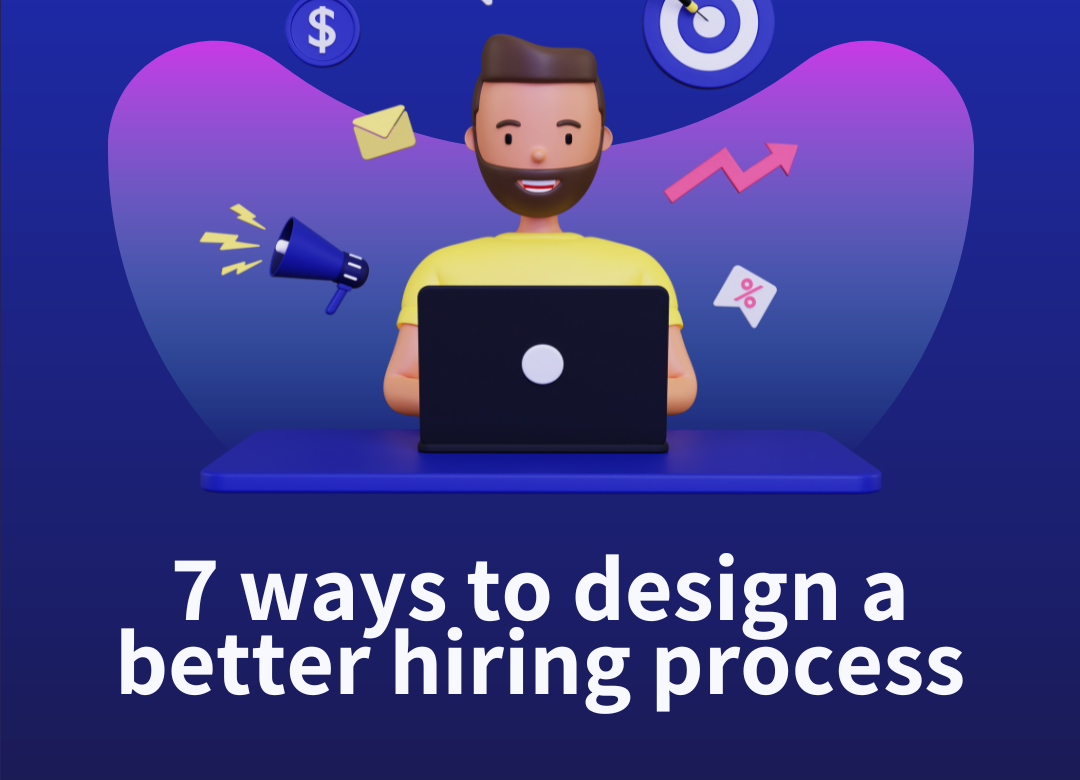Designing an effective and efficient hiring process is crucial for attracting top talent and making successful hires. Here are seven ways to design a better hiring process:
- Clearly Define Job Requirements: Start by clearly defining the job requirements and qualifications for the position. This includes identifying the essential skills, experience, and qualifications necessary for success in the role. By having a well-defined job description, you can attract candidates who are the best fit for the position.
- Streamline the Application Process: Simplify and streamline the application process to make it easy for candidates to apply. Minimize the number of steps and eliminate any unnecessary or redundant information gathering. Use user-friendly online application forms that allow candidates to upload their resumes and cover letters efficiently.
- Use Targeted Job Advertisements: Instead of relying solely on generic job boards, consider using targeted advertisements to reach the right candidates. Utilize niche job boards, professional networks, and industry-specific platforms to target candidates with the desired skills and experience. This approach can help attract more qualified candidates and reduce the time spent sifting through irrelevant applications.
- Implement Structured Interviews: Develop a structured interview process that includes a standardized set of questions for each candidate. This helps ensure consistency and fairness in evaluating candidates. Consider using behavioural or competency-based interview questions that assess candidates’ past experiences and how they align with the job requirements.
- Incorporate Skill Assessments and Tests: Assess candidates’ skills and abilities through skill assessments and tests relevant to the job. This can include technical assessments, problem-solving exercises, or role-playing scenarios. Skill assessments provide objective data to evaluate candidates’ proficiency and help identify the most qualified individuals.
- Involve Multiple Stakeholders: Include multiple stakeholders in the hiring process, such as hiring managers, team members, and HR professionals. Each stakeholder can bring a different perspective and evaluate candidates based on their specific expertise. Collaboration ensures that hiring decisions are well-rounded and minimize biases.
- Provide Timely Communication and Feedback: Keep candidates informed throughout the hiring process by providing regular updates on their application status. Promptly communicate any changes or delays that may occur. Additionally, provide constructive feedback to candidates, even if they are not selected. This helps maintain a positive candidate experience and enhances your employer brand.
- Implement Technology Solutions: Incorporate technology solutions to streamline and enhance your hiring process. Applicant tracking systems (ATS) can automate resume screening, manage candidate pipelines, and track hiring metrics. Video interviewing platforms can facilitate remote interviews and save time for both candidates and hiring managers. Leveraging technology can improve efficiency, reduce administrative burdens, and provide a more seamless experience for all involved.
- Assess Cultural Fit: Assessing cultural fit is essential to ensure candidates align with the organization’s values, work style, and team dynamics. Incorporate assessments, behavioral questions, or scenario-based exercises that evaluate candidates’ fit with the company culture. This step helps to identify individuals who not only possess the necessary skills but also align with the organization’s values and can thrive in the work environment.
- Develop a Positive Candidate Experience: Focus on providing a positive and respectful candidate experience throughout the hiring process. Promptly acknowledge receipt of applications, communicate timelines, and offer transparency regarding the process. Provide opportunities for candidates to ask questions and gain insights into the organization. A positive candidate experience can leave a lasting impression, even for candidates who may not receive an offer, and contribute to a positive employer brand.
- Regularly Review and Update Job Descriptions: Job requirements and market dynamics evolve over time. Regularly review and update job descriptions to ensure they accurately reflect the current needs and expectations of the role. Involve hiring managers and team members in this process to gain their insights and expertise. Updated job descriptions lead to more targeted and effective recruitment efforts.
- Conduct Effective Reference Checks: Incorporate thorough reference checks into your hiring process. Reach out to previous supervisors or colleagues provided by the candidate to gather insights into their work ethic, performance, and interpersonal skills. This step helps validate the candidate’s qualifications, verify their experience, and gain additional perspectives on their fit for the role.
- Promote Diversity and Inclusion: Design your hiring process to actively promote diversity and inclusion. Implement strategies such as blind resume screening, structured interviews, and diverse interview panels. Review job advertisements and descriptions to ensure they use inclusive language and attract a diverse pool of candidates. By fostering a diverse and inclusive hiring process, you can tap into a wider talent pool, enhance innovation, and build a more inclusive organizational culture.
- Establish a Candidate Feedback Loop: Create a feedback loop to gather feedback from candidates about their experience with the hiring process. This can be done through post-interview surveys or structured follow-up conversations. Pay attention to candidates’ suggestions and concerns, and use this feedback to continually improve your hiring process. A candidate-centric approach demonstrates your commitment to their experience and helps enhance your employer brand.
Next Innovation Asia


